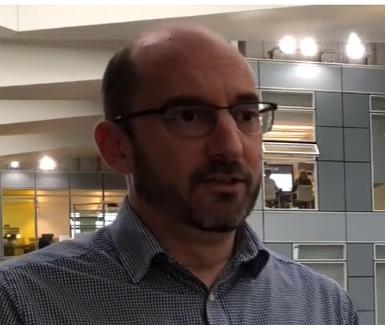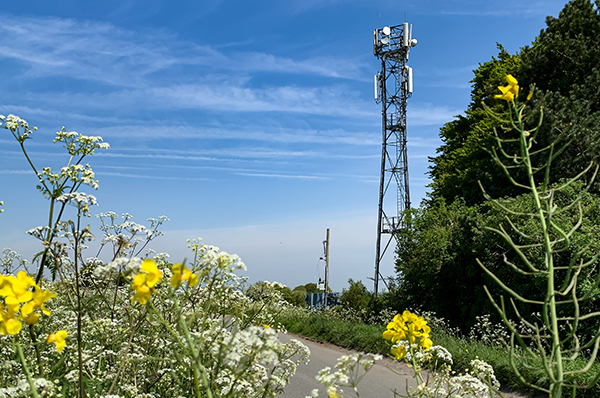Streamlining Asset Protection and Optimisation
We are reviewing and amending our standards, practices and approach to risk management.
By reassessing the way we govern our work with other organisations wishing to build on or near the railway, we will streamline processes and make it easier to work with us.
Asset Protection and Optimisation (ASPRO)
When working with us, third parties can expect to see better working practices, streamlined and consistent processes, and a slicker, less bureaucratic structure under a more consistent framework.
Officially Europe’s safest railway, it falls to our asset protection and optimisation (ASPRO) teams to make sure any work on or near the railway is done safely and to the right standards. Yet these standards and practices can sometimes mean it is difficult for third parties to deliver railway projects. Recognising this, we are implementing a number of reforms to the way our ASPRO organisation works, which will break down barriers and make it easier for other organisations to invest in and build on the railway.
New roles
To raise the professional competency, assurance and drive consistency within our ASPRO teams, a new national professional head of ASPRO role was created. Mona Sihota was appointed to the role, bringing nearly 30 years of railway experience spanning design, construction and asset management.
This newly created position capitalises on Mona’s previous experience as professional head of drainage to now include off-track (lineside, vegetation and boundaries) and ASPRO, as there are significant synergies between the areas of responsibility.
After successfully delivering a new national framework of standards and an ASPRO competency framework Mona is now focusing on her drainage and lineside portfolio and David Castlo now in the position of Network Technical Head for ASPRO.
Additionally, Network Rail has created roles for a head of ASPRO in each of the geographic routes/regions, who will work with project sponsors on third party requirements. They will be directly accountable to the industry for ensuring service levels are delivered.

David Castlo
Network Technical Head: ASPRO
National framework
A national ASPRO framework for standards has been produced and rolled out across the business. This framework supports driving a consistent and transparent approach for third parties working with us, meaning there are clearly defined processes, working practices, responsibilities and contacts right across the business. Third party promoters of projects on the railway will note they receive a quicker, more reliable service when dealing with Network Rail.
Service level obligations
Network Rail has committed to a range of Service level obligations which will make it easier for third parties to deliver work on or near the railway. We’ve worked with a number of internal teams and industry colleagues, and participated in an industry consultation, led by Amey Plc in a special advisory capacity, and formulated ASPRO service levels against which our customers and others can hold us to account. By having service level obligations in place, third party promoters of projects on the railway can know what to expect from Network Rail’s service and when to expect it by.
These service level obligations have been agreed with the ORR and are set out in the revised asset protection agreement (APA) and basic asset protection agreement (BAPA), the documents that guide how we work with third parties to enable them to deliver enhancements to the railway. These documents can be found on the downloads for third parties page.
Customer satisfaction surveys
As Network Rail owns and operates Britain’s railway, our responsibility to run and maintain it safely can mean other organisations feel we are difficult to work with when delivering railway projects. Recognising this, we are implementing a number of reforms to break down barriers and make it easier to work with us.
To ensure we’re making the right changes, we’ve conduct customer satisfaction surveys with all the external parties we work with. When working with your local ASPRO teams to delivery your rail related projects you will receive regular customer satisfaction surveys to check-in with you about your experiences. If you would like to complete a survey you will find this on the main ASPRO website.
Case study – Quicker access to sites for our customers
We work with hundreds of other business around the country who help run the railway. We arrange safe access for their staff so they can run and maintain the equipment and services they provide for Network Rail and passengers.
Cornerstone help run our telecommunications services and have around 250 masts next to the railway which need regular maintenance to make sure they’re working correctly and providing a good mobile phone service. We’ve worked with Cornerstone to trail a new process that reduces the amount of paperwork involved by 93% saving both organisations time and money. In doing so, we have reduced the average time it takes to complete low-risk and ground-level maintenance visits from 397 days to 93 days. This will continue to improve, as we work towards 15 working days to respond to our customer with an agreed site visit from receipt of initial enquiry.

Watch the video to find out more about quicker access to sites for our customers
Clarifying risk
It’s important an investor or developer know the risks they’re responsible for when building on or by the railway, as they differ greatly than when building on the high street, highway or any other environment.
We’ve looked at 41 separate categories of risk that could cause problems, delays or extra cost to a project on the railway and analysed where Network Rail can take ownership of that risk, or made it clear who will cover it. An ‘industry risk fund’ has been established to enable Network Rail to take the risk and fund liabilities when projects encounter certain unforeseen industry related problems. The default risk allocation table is available from our downloads for third parties page and details each potential risk and who is responsible for it – Network Rail, the industry risk fund, the sponsoring customer or the enhancement contractor.
New, cheaper ‘risk fees’
To encourage third party investment into the railway, we have a system to address commercial and industry liabilities taken on by Network Rail when working with third parties. Known as ‘risk fees’ they are applied as percentage uplifts to third party agreements to fund Network Rail to take on certain risks and pay the costs of these if they occur.
After reviews within the industry and working with the ORR, it has been decided that reductions to the percentage fees can be implemented to third party agreements for development services and asset protection agreements.
As of 1 April 2021, the amendments to the risk fees are:
|
|
Previous Network Rail fee
|
NEW Network Rail fee
|
|---|---|---|
|
Basic service agreement (BSA) |
5% |
1% |
|
Basic asset protection agreement (BAPA |
10% |
5% |
|
Asset protection agreement (APA) |
10% |
7.5% |
|
Development services agreement (DSA) |
5% |
1% |
|
Basic implementation agreement emerging cost. (BIA: EC) |
5% |
2.5% |
|
|
Previous industry risk fee
|
NEW industry risk fee
|
|---|---|---|
|
Basic service agreement (BSA) |
0% |
0% |
|
Basic asset protection agreement (BAPA) |
2% |
1% |
|
Asset protection agreement (APA) |
2% |
1% |
|
Development services agreement (DSA) |
2% |
1% |
|
Basic implementation agreement emerging cost. (BIA: EC) |
2% |
1% |
The risk fee percentages on all other third-party agreements will remain as currently set. These amended risk fees will take effect for any agreement entered into from 1 April 2021. The new risk fees are not retrospective and the terms of existing contracts will not be affected. Any agreements entered into prior to 1 April 2021 will use the risk fee percentages set out in those agreements. This includes any variations made to existing agreements i.e. the contract terms entered into will continue to apply.